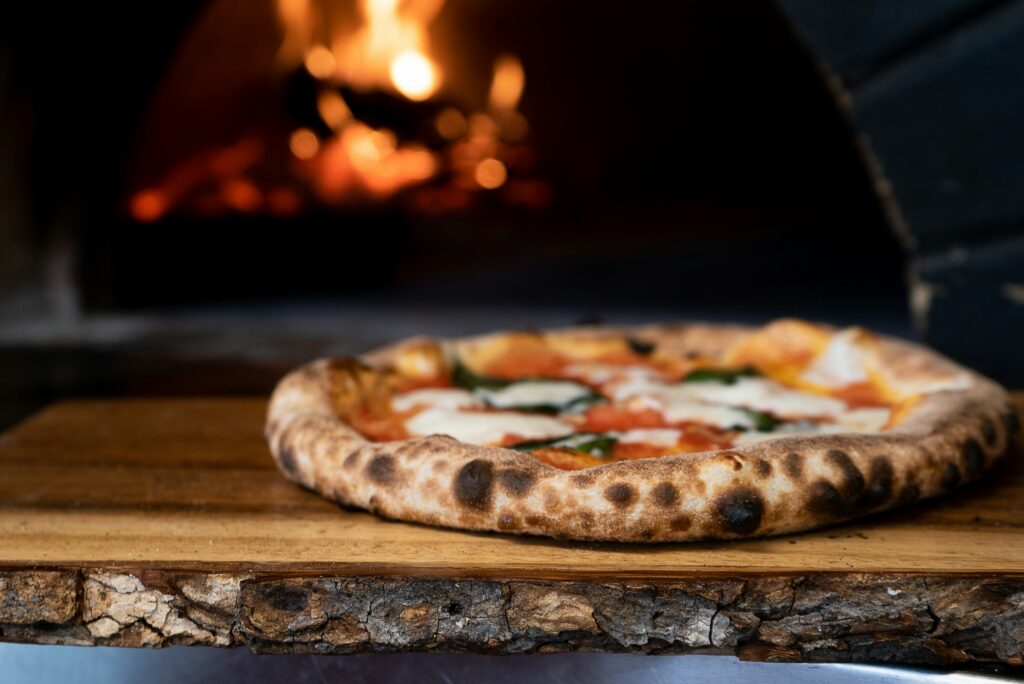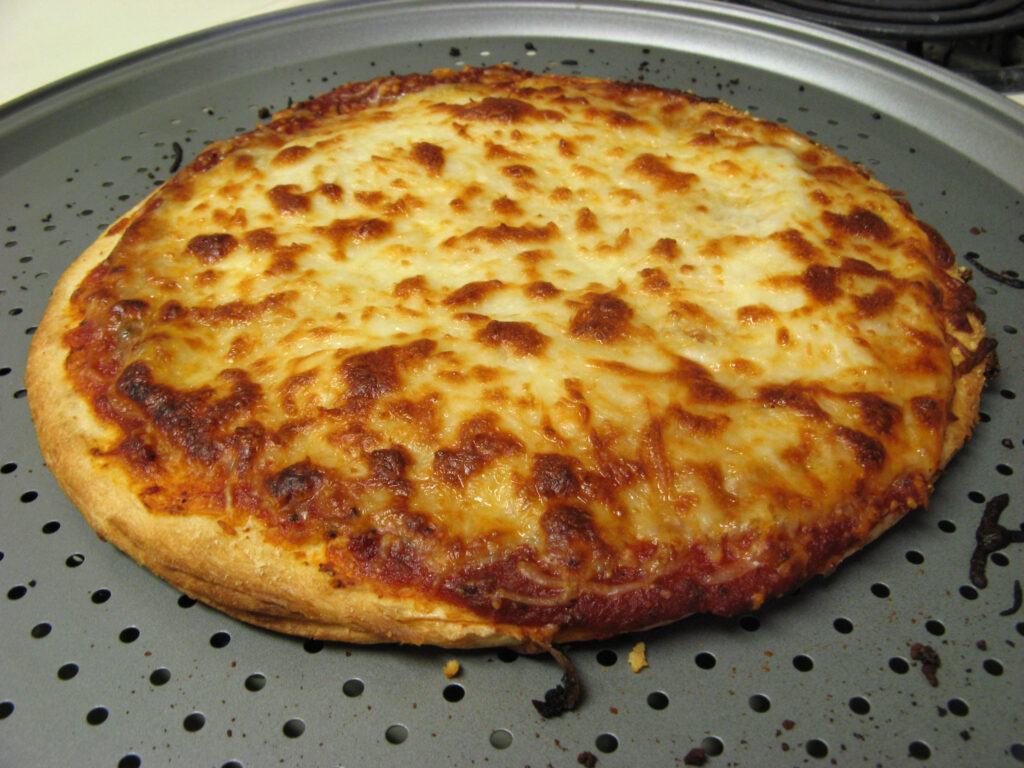Are you a digital nomad, an adventurous traveler, or an expat living in the bustling streets of Buenos Aires, constantly searching for culinary delights that speak to the soul of this vibrant city?
Look no further, as ExpatPathways brings you an exclusive guide to the 10 Best Varieties of Pizza in Buenos Aires.
This article promises to take you on a gastronomic journey, unveiling the hidden gems and local favorites that define Buenos Aires’ pizza scene.
Whether you’re craving the classic Muzzarella, the savory Fugazzetta, or the indulgent Provolone, our curated list is your gateway to experiencing pizza like never before, in a city renowned for its rich culinary heritage and innovative flavors.
Dive into this culinary exploration with us and challenge your palate with Buenos Aires’ top pizza varieties, each promising a taste of Argentina’s soulful and vibrant food culture.
First of all: Pizza on the stone or pizza in the pan?
In the heart of Argentina’s culinary tradition lies a passionate debate that has captivated food lovers both locally and around the world: the preference between stone-baked pizza (pizza a la piedra) and pan pizza (pizza al molde).
These two classic styles of pizza making highlight the diversity and rich culinary craftsmanship of Argentine pizza, each boasting unique methods of preparation, cooking techniques, and a loyal following that vehemently defends their chosen style.
Pizza a la Piedra: The Stone-Baked Tradition
Pizza a la piedra, or stone-baked pizza, is distinguished by its direct baking on a hot stone base within the oven, requiring higher temperatures for cooking.
This method demands a dough that is less hydrated and incorporates oil (alternatively butter or margarine, though not traditionally) into its mixture. The dough for stone-baked pizza undergoes two fermentation processes and, adhering to technical standards, should rest in a cold environment for 24 to 48 hours before baking.
This extensive maturation period not only enhances the dough’s flavor, making it more delicious and digestible, but also ensures a golden crust that is notably lighter on the stomach.
The hallmark of a properly cooked pizza a la piedra is its exceptionally crispy base, devoid of any crumb, showcasing the enzymatic action that renders the dough both tastier and more easily digestible.

Pizza al Molde: Pan Pizza Perfection
Conversely, pizza al molde, or pan pizza, is known for its dough that is more hydrated, undergoing three fermentation phases and possibly containing oil, with a shorter rest period.
This style involves an initial pre-baking (prepizza) of the dough in a mold or pan before the toppings are added and the pizza is fully cooked.
The result is a pizza with a distinctive base that, while having a crust, features a soft, firm, and evenly distributed crumb. When slicing a pan pizza, one should observe a golden bottom, a fluffy middle, and a topped layer, delineating the separate layers of the pizza.
Due to its containment by the pan, this type of pizza tends to feel heavier in the stomach compared to its stone-baked counterpart.
Discover the best pizza restaurants on Corrientes Street
The Best Varieties of Pizza in Buenos Aires
1. Muzzarella
Leading the charge is the Muzzarella pizza, a symbol of Buenos Aires’ culinary prowess and a fierce contender among the top three most requested pizzas alongside Fugazzetta and the ham and red pepper pizza.
Lauded by many connoisseurs as possibly the best Muzzarella pizza worldwide, particularly found in Buenos Aires, its simplicity and classic taste stem from a few but impactful ingredients: dough, tomato sauce, muzzarella cheese, oregano, and olives.
The evaluation of a pizza restaurant’s merit often hinges on the quality of its Muzzarella pizza, underscoring its esteemed status in the local food scene.
2. Fugazzetta
On the other hand, the Fugazzetta, a testament to the innovative spirit of Buenos Aires’ pizzerias, stands out as an unmissable variant of the typical Argentine pizza with its thick, mozzarella-laden base.
Rooted in the Fugazza, itself a derivative of Italian focaccia, the Fugazzetta is a culinary marvel featuring a pizza dough blanketed with cheese and onions.
While recipes may vary in the proportions of each ingredient and their interaction with the pizza dough, the hallmark of an exemplary Fugazzetta lies in its generous layer of melted cheese and its fluffy texture, offering a rich and satisfying experience to the palate.
3. Napolitana
Continuing our gastronomic journey through Buenos Aires, we encounter the Napolitana pizza, a classic favorite known for its special taste and aroma.
This pizza’s success lies in the harmonious blend of its ingredients, with a notable mix including tomato sauce, muzzarella, sliced tomatoes, and the crucial addition of garlic and parsley, offering a spicy kick that enhances its overall flavor.
The Napolitana is highly sought after in Buenos Aires’ pizzerias, with aficionados often insisting on the presence of all its defining ingredients for an authentic experience.
A truly exceptional Napolitana pizza is distinguished by its abundant use of tomato, releasing the enticing aromas of garlic and parsley, hinting at a variant that elevates the dish with just one more ingredient.
4. Jamón y morrones
The Jamón y Morrones (Ham and Red Peppers) pizza is another beloved staple within Buenos Aires’ pizza repertoire, celebrated for its meticulous ingredient selection, particularly the type of red pepper used.
While many opt for canned peppers, the consensus is that roasted peppers bestow the pizza with its distinctive flair. Ranking within the top five pizzas ordered in Buenos Aires’ pizzerias, the Jamón y Morrones combines the flavors of red pepper, ham, cheese, and tomato sauce into an explosive taste sensation.
The preference for cooked ham paired with either roasted or canned peppers creates a balance of flavors that encapsulates the vibrant culinary spirit of Buenos Aires, making it a must-try for anyone exploring the city’s pizza scene.
5. Anchovies
Diving deeper into Buenos Aires’ pizza landscape, we discover the Anchoas pizza, a hidden gem among the city’s pizzerias.
This pizza, featuring anchovies as its star ingredient, divides Buenos Aires’ diners into two camps: those who revel in its distinct, salty flavor, and those who, not fond of fish or seafood, steer clear of it.
The key to an exceptional Anchoas pizza lies in its generosity with anchovies, ideally allotting one for each slice.
Debate surrounds the best method of incorporating anchovies into the pizza: some advocate for adding whole anchovies atop the finished pizza, preserving their integrity, while others suggest blending them with paprika and other spices, then mixing this with the tomato sauce before baking, a technique that intensifies the anchovies’ flavor while demanding more preparation time.
6. Margarita
Meanwhile, the Margarita pizza holds a special place in both the history of pizza and the hearts of Buenos Aires’ pizza aficionados.
Originating as a tribute to Queen Margarita of Savoy, its ingredients—tomato, mozzarella, fresh basil, salt, and oil—mirror the colors of the Italian flag, marking it as the pioneering pizza to incorporate cheese.
The secret to a sublime Margarita pizza lies in its moist tomato topping and the use of high-quality mozzarella. While some Buenos Aires pizzerias add basil directly with no prior treatment, others opt for a more elaborate approach, either sautéing or marinating the basil in oil, significantly enhancing its flavor impact on the pizza.
7. Calabresa
Venturing further into Buenos Aires’ pizza offerings introduces us to the Calabresa, a choice for those who appreciate a bit of spice in their food.
Named after its origin in Calabria, Italy, this pizza variety has found a distinctive place in Buenos Aires with its combination of muzzarella, slices of calabresa (a spicy salami that can be substituted with similar meats), provenzal (a mixture of garlic and parsley), and tomato sauce.

The debate over when to add the calabresa slices—before the final baking phase or immediately after the pizza comes out of the oven—highlights the local commitment to culinary perfection.
Recognized under different names like peperoni in the United States, purtuquesa in Brazil, or cabrese in Italy, the Calabresa pizza’s versatility and bold flavor make it a celebrated choice among Buenos Aires’ pizza enthusiasts.
8. Four Cheese
Equally esteemed is the Cuatro Quesos (Four Cheese) pizza, a creamy and rich variant that melds four Italian cheeses—typically muzzarella, gorgonzola, fontina, and parmesan—into a harmonious blend.
While traditionally melted over a tomato sauce base, variations without tomato are also popular, showcasing the flexibility of this beloved recipe.
In Buenos Aires, as in Italy, the Cuatro Quesos pizza is a staple on pizza restaurant menus, offering a delightful tasting experience where the distinct flavors and textures of each cheese can be savored individually.
The selection of cheeses, ranging from the moisture-retaining muzzarella to the creamy gorgonzola, and complemented by the likes of fontina, parmesan, and potentially others like pecorino or ricotta, allows for a nuanced taste profile.
The key is to use full-fat or semi-fat cheeses to achieve the perfect melt and flavor combination, ensuring a memorable culinary experience that pays homage to both Italian traditions and Buenos Aires’ vibrant pizza scene.
9. Stuffed Fugazzeta (Onion pizza stuffed with cheese)
Buenos Aires’ pizza scene further impresses with the Fugazzetta Rellena (Stuffed Fugazzeta), an Argentine specialty that elevates the traditional Fugazzetta to new heights of indulgence.
This variant is known for its remarkable volume, with many asserting it’s akin to having two pizzas in one. The Fugazzetta Rellena boasts a unique structure comprising two pizza layers with cheese sandwiched in between and onions on top.
While traditionally the bottom layer is thicker and larger, making for a crispier top layer, the cheese used ranges from cuartirolo to mozzarella, with provolone or parmesan gracing the top.
A hidden delight in some Buenos Aires’ gems is the inclusion of cooked ham within the cheese, creating a sublime fusion of flavors that further distinguishes the Fugazzetta Rellena from its pizza counterparts.
10. Provolone
Equally noteworthy is the Provolone pizza, a testament to the versatility and rich flavor profile of Provolone Val Padana, an Italian cheese hailing from the north of Italy.
Its firm texture and distinct taste make it a popular choice in various dishes, from salads to hot plates, thanks to its melting capacity. In Buenos Aires, pizzerias daringly replace or pair muzzarella with provolone, giving rise to the exquisite Provolone pizza.

This variation offers a cheese that is firmer and more textured than muzzarella, appealing to those seeking a more robust flavor and texture in their pizza.
Provolone’s versatility extends beyond pizza to provoletas, a delectable melted cheese dish, and its use in Romania akin to parmesan, showcasing the international appreciation for this flavorful cheese.
(Featured Image Source: Ivan Torres/unsplash.com)


